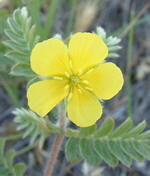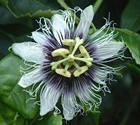|
 The
plants of the Galapagos Islands had a great influence on Charles
Darwin's work. His interest in plant geography and dispersal
mechanisms was closely tied to the results of his collections on
the islands. The first scientific guide to the flora of the
archipelago was prepared by Joseph Dalton Hooker (1846), an
eminent botanist, and was based mostly on Darwin's specimens. Plants are the basis of all life within the
Galapagos Islands. Of the 500 species of "higher" plants 40% are
endemic. These plants combined with the 200 species of introduced
plants and 500 species of mosses, lichens and liverworts give the
Galapagos its complex ecosystem. The variety of plants on the
islands is quite large since they all have different climates. The
mix between lava rocks, deserts and forests is quite interesting
and shows many different kinds of environments to expore for
vegetation. The
plants of the Galapagos Islands had a great influence on Charles
Darwin's work. His interest in plant geography and dispersal
mechanisms was closely tied to the results of his collections on
the islands. The first scientific guide to the flora of the
archipelago was prepared by Joseph Dalton Hooker (1846), an
eminent botanist, and was based mostly on Darwin's specimens. Plants are the basis of all life within the
Galapagos Islands. Of the 500 species of "higher" plants 40% are
endemic. These plants combined with the 200 species of introduced
plants and 500 species of mosses, lichens and liverworts give the
Galapagos its complex ecosystem. The variety of plants on the
islands is quite large since they all have different climates. The
mix between lava rocks, deserts and forests is quite interesting
and shows many different kinds of environments to expore for
vegetation.
The coastal strip of the Galapagos is mainly
evergreen. This zone is not strictly a climatic vegetation type
but is an ecological one based on salt tolerance abilities of
certain species at the land/sea interface. The type of vegetation
found varies greatly and depends on the type of coast. Many plants
in this zone are adapted to dispersal by the sea, especially the
mangroves. Few plants found in this zone are endemic as a result
of the unstable nature of the environment.
Lava Cactus: One of the first plants to
colonize a new lava field, the Lava Cactus is found on barren
black lava flows such as this one on Bartolome Island. It seems to
have no food value even to the lizards, although its large white
flowers may offer food for the carpenter bee and other insects.
Espino: The espino, or spiny bush
grows on inhospitable-looking beaches. In the hot sun its few
leaves are curled up and inconspicuous. This one grew to about six
or seven feet high on the beach on Bartolome. It produces a sour
red or brown fruit edible to both finches and humans.
Cacaotillo: The cacaotillo (Miconia
robinsoniana) grows only on the southern slopes of the two islands
of Santa Cruz and San Cristobal, at about 500 to 700 meters
elevation. In the Miconia vegetation zone the cacaotillo shrub is
the tallest plant, reaching about 2 to 5 meters high. It is
endemic to the Galapagos.
 Passion
Flower: This species of passion flower is endemic to the
islands and the commonest of the three species. It occurs from the
arid zone up to the Scalesia zone. (Learn more about vegetation
zones.) It is a vine, climbing over the ground, shrubs and tree
trunks. When ripe, the fruits, protected in feathery bracts, turn
yellowish. Birds eat them, dispersing the seeds. The flowers are
white, unlike most passion flowers (on the mainland) which are red
to purple. This picture was taken at Punta Cormorante on Floreana
Island. Passion
Flower: This species of passion flower is endemic to the
islands and the commonest of the three species. It occurs from the
arid zone up to the Scalesia zone. (Learn more about vegetation
zones.) It is a vine, climbing over the ground, shrubs and tree
trunks. When ripe, the fruits, protected in feathery bracts, turn
yellowish. Birds eat them, dispersing the seeds. The flowers are
white, unlike most passion flowers (on the mainland) which are red
to purple. This picture was taken at Punta Cormorante on Floreana
Island.
Opuntia: The genus Opuntia is
represented in Galapagos by six species and fourteen endemic
varieties. O. megasperma var. orientalis of Española Island is
listed as an "endangered" species, due to decline caused by
introduced goats until their eradication in 1978 and by the
dramatic decrease in the giant tortoise, which dispersed Opuntia
seeds. Today this species shows restricted distribution and poor
regeneration. |